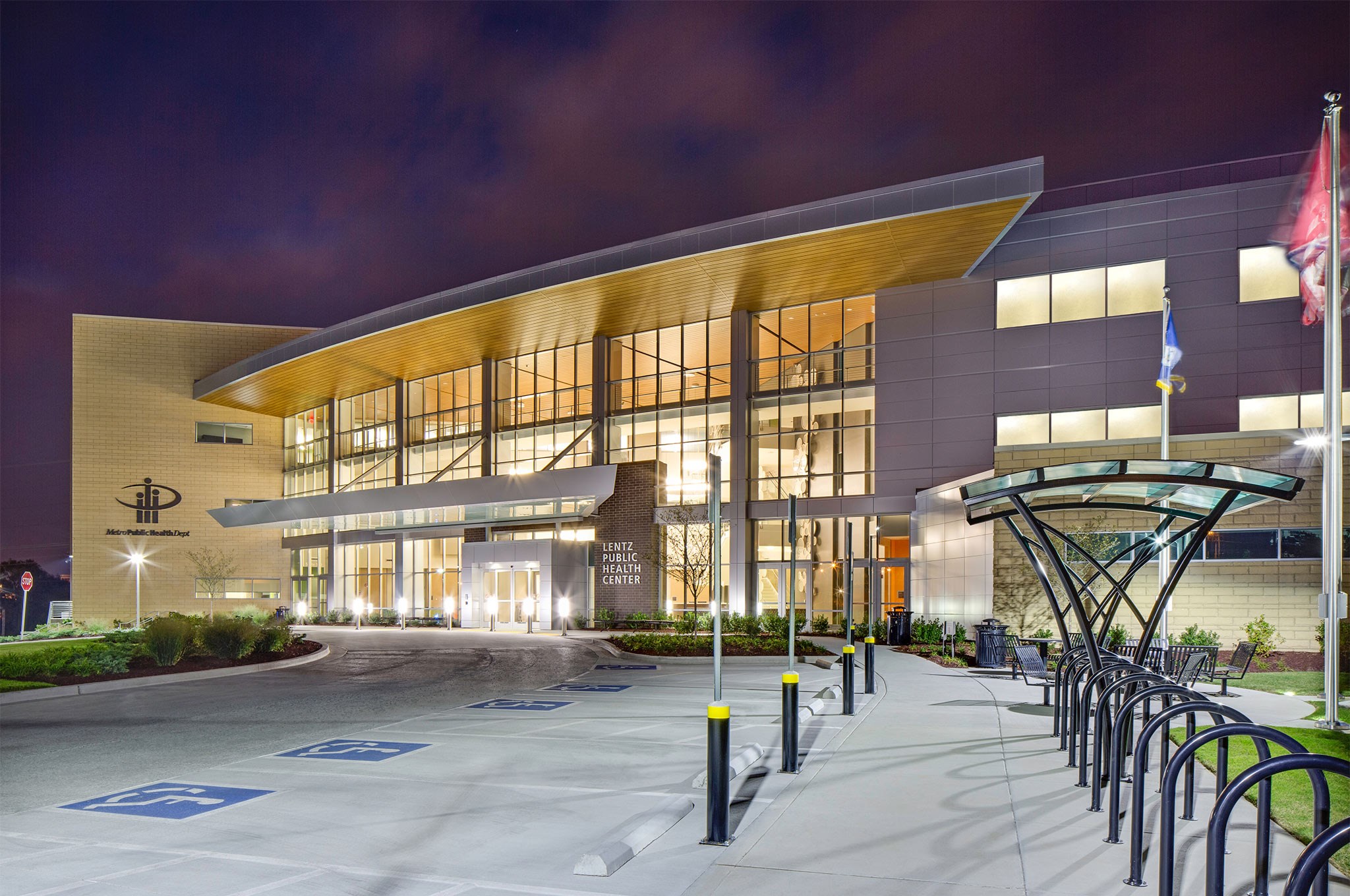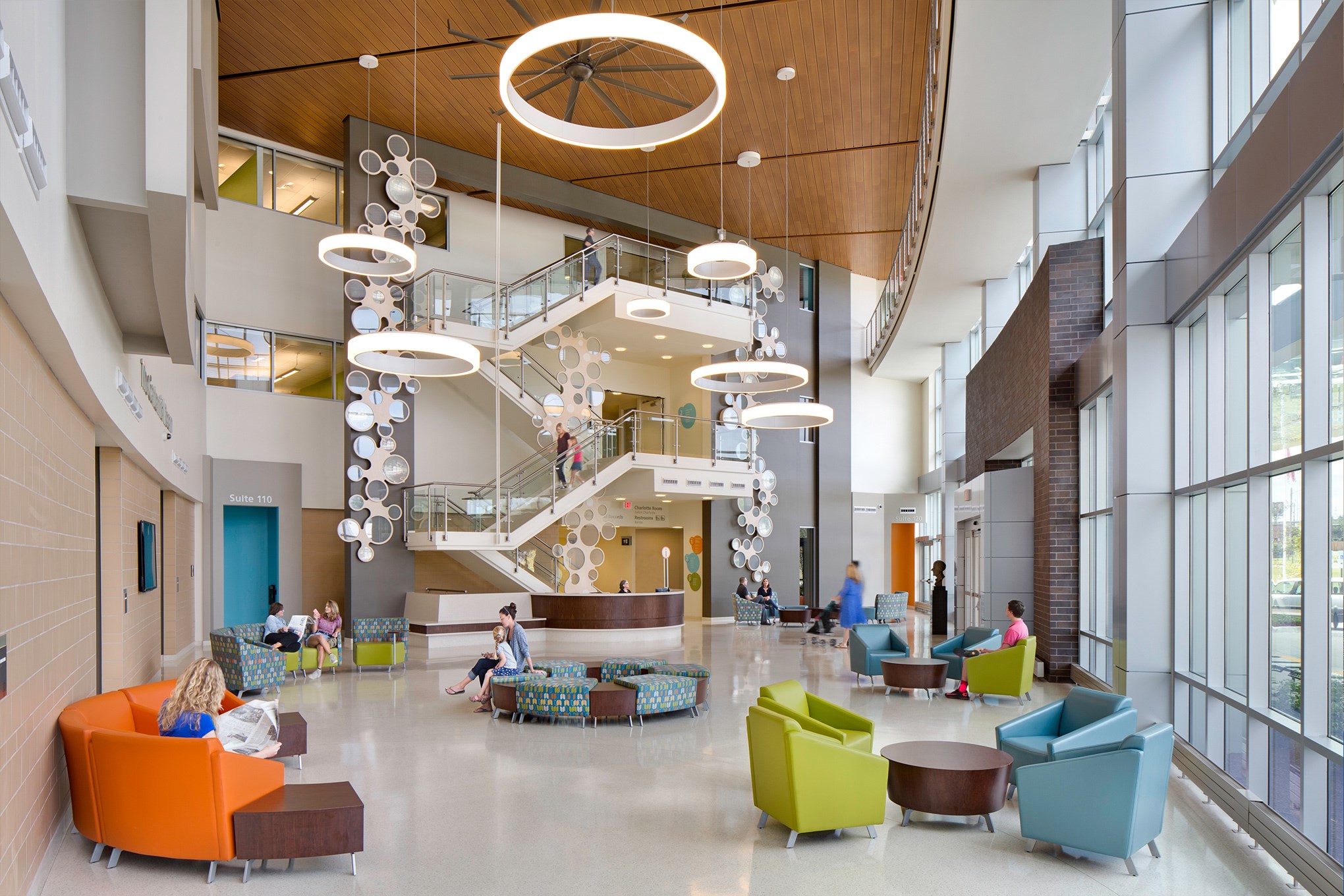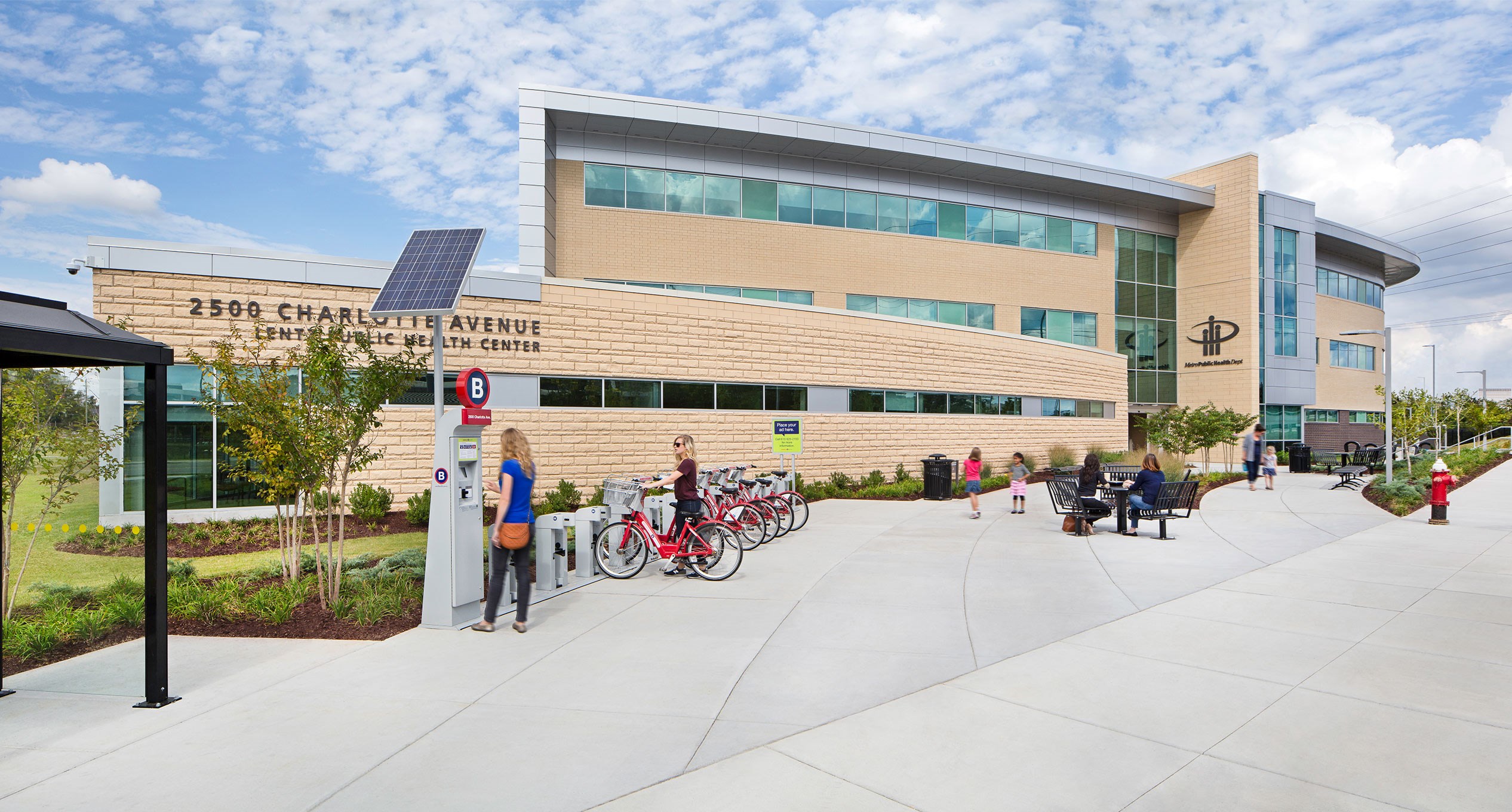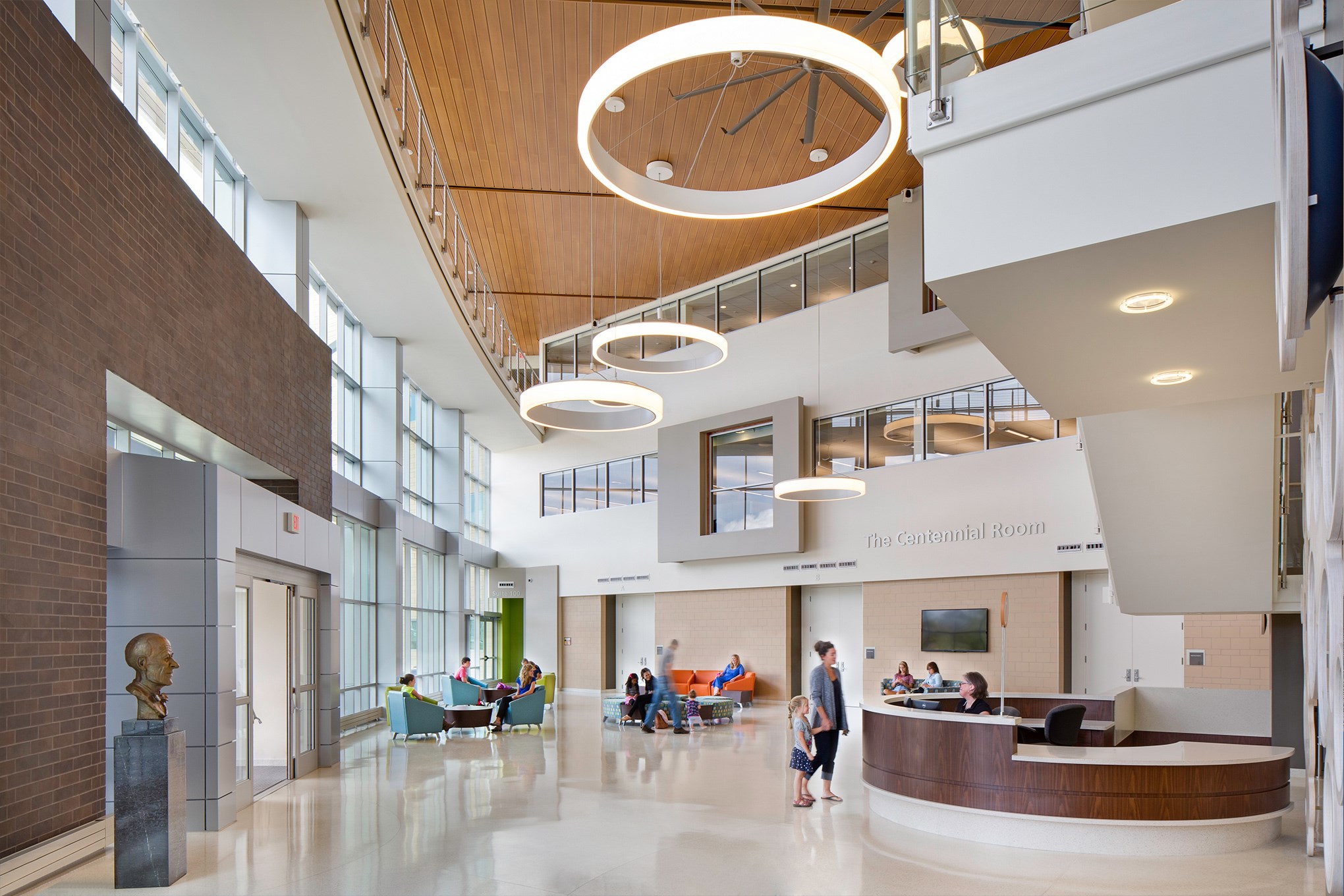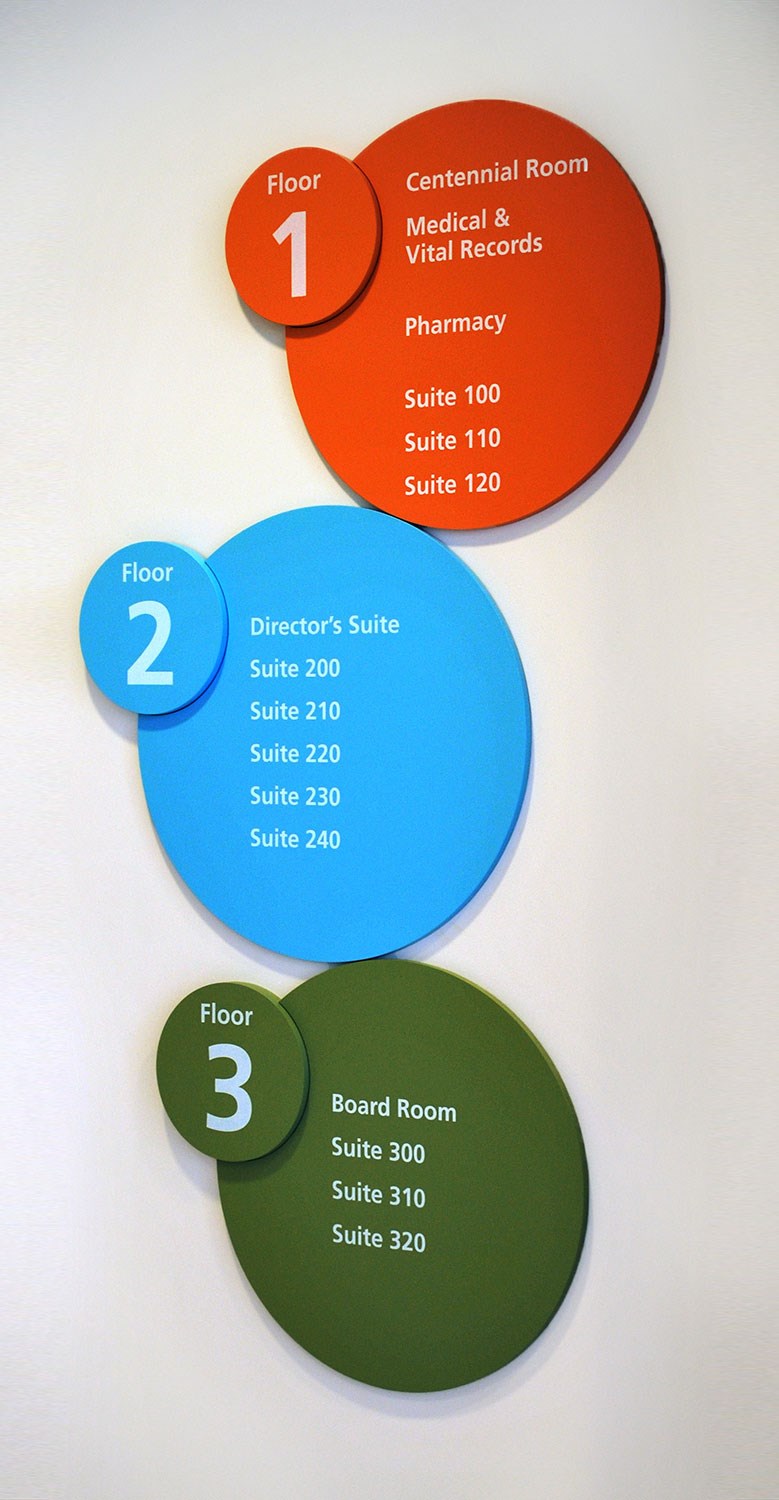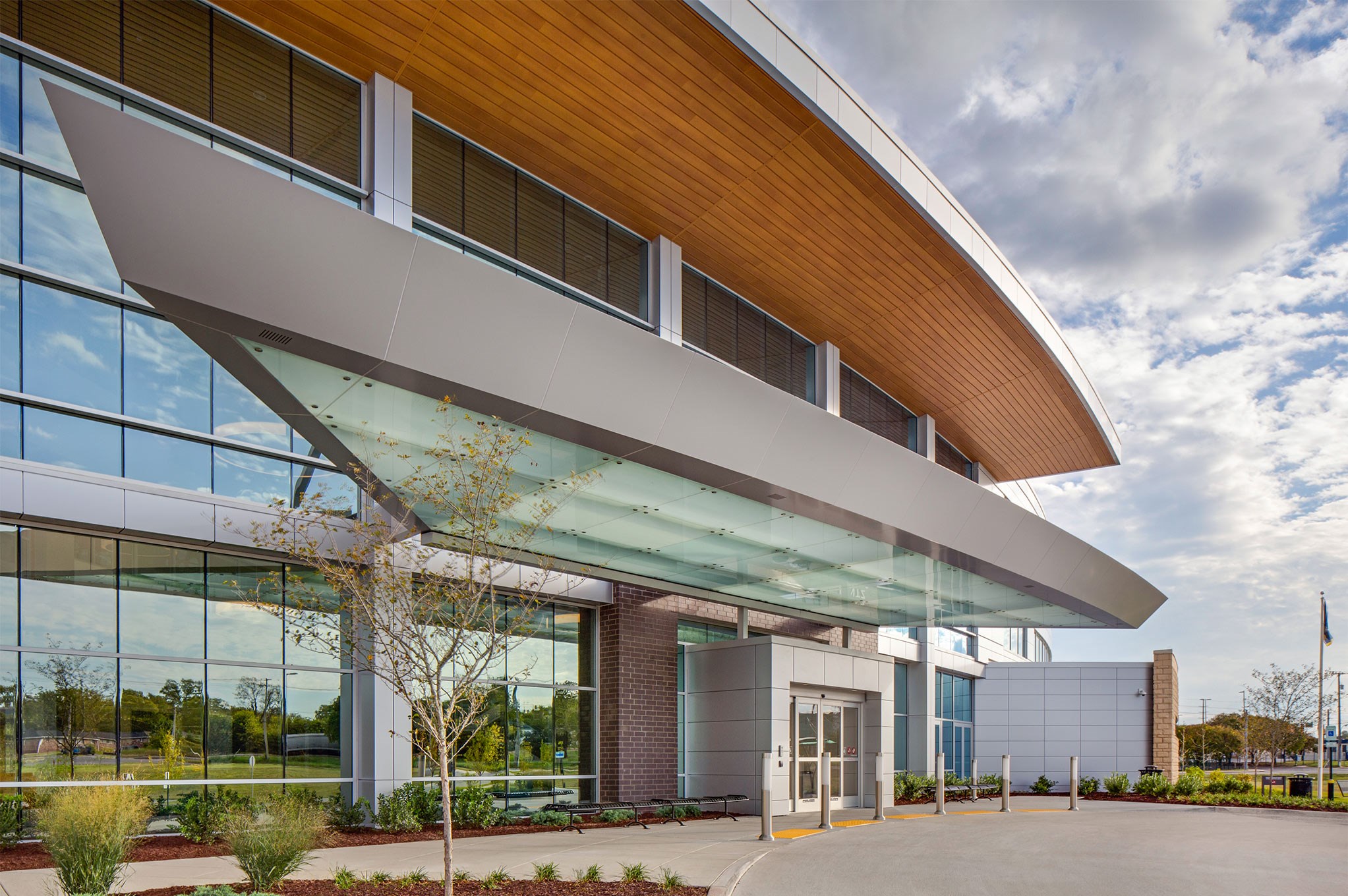Named after Dr. John J. Lentz, the first health director in Nashville and Davidson County, Lentz Public Health Center has successfully served the Metro Nashville community for more than 50 years. Built in 1958, the original Lentz facility was aging and in need of updates. Originally constructed as a fallout shelter that could convert into a hospital should a catastrophic event occur in the city of Nashville, the existing building’s limitations were far too great to consider renovations.
In a unique public-private partnership and land-swap agreement, HCA, in association with Metro Public Health Department (MPHD), selected Gresham Smith to provide architecture, engineering, interior design and workplace strategy services for a new 106,000-square-foot facility that would combine administrative office space and public health clinics in a new, more visible location.
square-feet
improvement in energy performance
public health bureaus call Lentz home
Guiding Principles Lead the Way
Exemplifying MPHD’s mission to “protect, improve and sustain the health and well-being of all people in Metropolitan Nashville,” the design of the new facility was driven by a key set of guiding principles. At the beginning of the project we conducted a workplace strategy and developed the list, which not only helped us support the client’s mission, but also allowed us to achieve all of their objectives. Consistent with the client’s culture, values and mission, the guiding principles centered on activating the workplace, keeping it flexible for change over time, and providing a healthy, accessible and sustainable building for the city of Nashville.
A Healthy Design for a Healthy Workplace
To help support and encourage a more active lifestyle in the workplace, we integrated design elements into the space that allow employees to interact with the building. A monumental stair is prominently featured in the main three-story atrium, encouraging staff and visitors to use the stair instead of the elevators. There’s also an interactive art component that detects people’s movement up and down the staircase, which makes taking the stairs a more fun experience.
The design team also incorporated a 1/8-mile indoor walking loop around the perimeter of the third floor. Staff will often hold ‘walking’ meetings on the track and visitors in the main lobby area can look up and see Metro employees literally ‘walking the talk’ of healthy living and physical activity in their workplace.
Also supporting better health, we centralized printers and breakrooms on each floor to encourage staff to get up and walk, while an on-site fitness center allows employees to exercise before or after work, or during their lunch break.
Engaging the Community
Aside from being home to a public service institution, Lentz also offers spaces for community members. The multipurpose room on the building’s ground floor can be utilized by any Metro agency or community group, even after hours and amenities such as the atrium and the demonstration kitchen are also available for shared events.
Outside, the site features a ¼-mile outdoor walking loop that is open to the public, and a street-front plaza with a solar-powered bus shelter, bike rental, site furnishings and bike racks. Bike lanes were added along Charlotte Avenue as Lentz Public Health Center was being constructed, and we implemented a solar-powered B-cycle kiosk on the front plaza offering a convenient location where people can engage in the city’s bike-share program.
Supporting Multiple Agencies
Slightly smaller than the original Lentz Public Health Center, Gresham Smith designed the new three-story facility to effectively support the evolving clinical and administrative needs of five public health bureaus: Population Health; Community Health; Environmental Health; Family, Youth and Infant Health; and Finance and Administration. Combined, the departments provide a wide range of public health services under one roof, including immunizations, food inspection services, dental care, TB screening, pest management services, nutrition counseling, disaster preparedness and automobile emissions program management.
A Place of Safety, Security & Privacy
The new building featured increased safety and security. The north and south entrances are visible from a single security desk, while the atrium provides a high degree of visibility for the ground-floor activity, as well a the monumental stair. Administrative departments and areas where patient health information is stored are secured behind locked doors, providing the highest-level of protection and privacy for patients.
Additionally, some of Nashville’s most vulnerable come to the center for healthcare needs. Higher-risk populations, such as people diagnosed with TB, are directed to different entrances for public safety. Coming up with design solutions for the different populations, however, came with a number of challenges. We had to approach every clinic like it was its own project with unique needs and clientele, meaning the design solution for one clinic wasn’t necessarily the solution for another. We ended up locating all of the high-volume clinics and agencies on the ground floor, while the smaller specialty clinics and administration were placed on the second floor.
Sustainable & Smart Building Design Solutions
Designed for LEED Silver certification, we incorporated significant energy conservation and reduction measures into the new facility, including a building envelope design that outperforms the requirements of Metro’s current code. In fact, we optimized energy performance to the tune of 14-16 percent over the typical baseline energy consumption for a building of this type.
We also installed a mechanical system with specially designed pressurization for airborne diseases. In the TB Prevention Clinic the system provides 100-percent outside air and negative pressure, meaning none of the air inside the clinic gets into the surrounding spaces.
Also enhancing air quality, Gresham Smith, in association with former bureau director of environmental health, Brent Hager, designed a ground-breaking system for radon mitigation, which has been linked to lung cancer.
Other sustainable features include a state-of-the-art lighting system controlled by daylight sensors and occupancy sensors; water-efficient plumbing fixtures; an on-site retention pond that collects stormwater, allowing for slower, cleaner and more manageable flows into the stormwater system; and a 20,000-gallon rainwater cistern that collects roof rainwater and supplies a subsurface drip irrigation system for sod and plantings surrounding the building.
An Example to the City at Large
Recreating the face of public health in Nashville, the new Lentz Public Health Center serves the Metropolitan Nashville area in a brand-new way, providing the community with easy access to a first-class facility that is safe, innovative and sustainable. The design was honored in the ULI Nashville Excellence in Development awards in the Public Sector-Large category.
The building's intentional design is a breath of fresh air, representing a substantial commitment to a healthier Nashville, both for the services Lentz will provide and as a model of healthy design for a healthy workplace. The new Lentz Public Health Center provides the resources Nashville citizens need to make the right choices—the healthy choices—for themselves, their families and their future.
Project Contact
Our team is committed to improving the places we call home.

